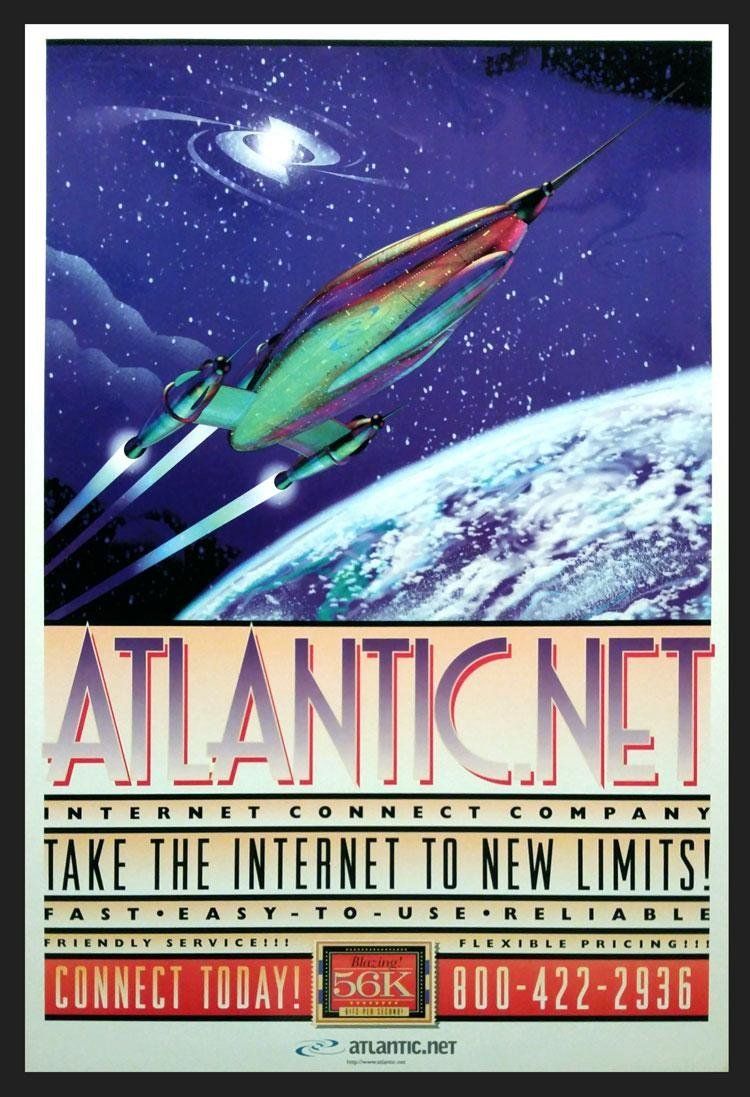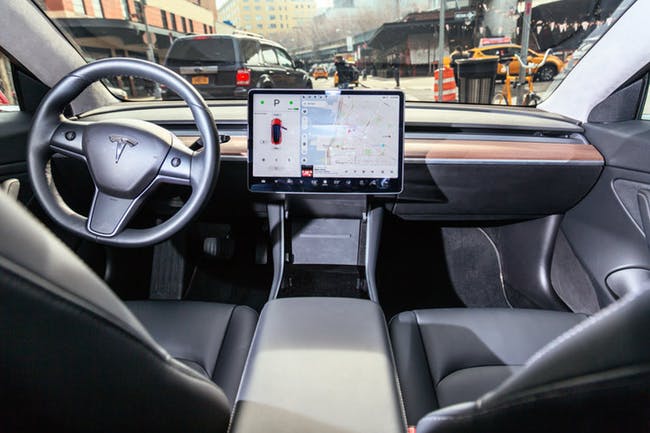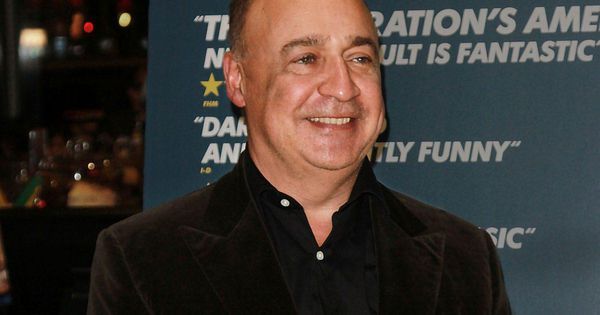Space could represent a new frontier for cloud infrastructure. Amazon, Microsoft, Google, IBM and Oracle battle for business from companies that are offloading their data center computing and storage needs.



Tesla is shaking up the automotive industry. But which of Tesla’s products and features are doing the disrupting, and who will be affected? A recent article by Benedict Evans delves into the details of this automotive disruption with comparisons to similar shake ups in the tech industry.
Evans uses the disruptive wave that Apple unleashed on Palm, Nokia, and other makers of previous-generation cell phones as an analogy. “When Nokia’s people looked at the first iPhone, they saw a not-great phone with some cool features that they were going to build too, being produced at a small fraction of the volumes they were selling,” he writes. “When many car company people look at a Tesla, they see a not-great car with some cool features that they’re going to build too, being produced at a small fraction of the volumes they’re selling.”
But can Tesla be considered the Apple of the auto industry, and if so, what would that mean? Disruption occurs when a new technology or concept changes the basis of competition in a field. However, not every new technology turns out to be disruptive. “Some things do not change the basis of competition enough, and for some things the incumbents are able to learn and absorb the new concept instead,” writes Evans, noting that business professor Clay Christensen calls this “sustaining innovation” as opposed to “disruptive innovation”.

Join the largest community of machine learning (ML), deep learning, AI, data science, business analytics, BI, operations research, mathematical and statistical professionals: Sign up here. If instead, you are only interested in receiving our newsletter, you can subscribe here. There is no cost.
The full membership includes, in addition to the newsletter subscription:

For businesses that want to maintain or increase their bottom line, this means re-engineering the fundamentals of their supply chain by developing or adopting new material solutions that achieve a lot more with a lot less.
“The smart companies, manufacturers and brands are the ones who are starting to invest in sustainable material innovation,” says Caroline Till, co-author of Radical Matter: Rethinking Materials for a Sustainable Future, adding, “There’s a thirst from consumers for this.” It’s clear that tomorrow’s leaders will be those who are brave enough to invest in this research today.
For The Future Laboratory’s new Material Far Futures report, we’ve compiled the most transformative case studies in material innovation into the 10 paradigms that we believe will disrupt industry in the coming decades, each with original visualisations from Studio Brasch. From fabrics that generate power through motion and new forms of kinetic architecture to bio-engineering’s impact on luxury fashion, the materials of tomorrow will be smarter, stronger, more dynamic and, crucially, less ecologically damaging.

Len Blavatnik, the Ukrainian-born and Russian-raised billionaire businessman with a net worth of $17.9 billion, says he has given away $500 million to charity so far, mostly to world-renowned universities like Oxford, Harvard, Stanford and Yale. When asked why he favors donating to higher education institutions, he explains shrewdly that for him, conducting philanthropy is like running a business.
Len Blavatnik, who made his first billions in Russia, credits much of his success to his academic parents and to his education. He’s given hundreds of millions to universities mostly in America and England.

The funding, awarded by the UK Government’s Department for Business, Energy and Industrial Strategy’s Regulators’ Pioneer Fund, will be used to pioneer new ways of regulating the autonomous and smart shipping industries to help them deliver innovative new technologies to the traditional maritime sector.
The global autonomous shipping industry is predicted to grow into a $136 billion behemoth by 2030, with UK businesses already playing a key role. The funding will see the creation of the Maritime Autonomy Regulation Lab, where regulators from the MCA and DfT can work with academia and support industry to promote on-water testing and flagship projects and help the UK grow its presence in the global marketplace.

China put tiny spy chips on many U.S. servers. That’s the word from Bloomberg Businessweek, whose cover story published Thursday asserts that Beijing persuaded Chinese hardware manufacturers to install a surveillance chip, half the size of a grain of rice, on the motherboards of hundreds of thousands of data servers sold around the world by a U.S. company called Supermicro, including to Amazon and Apple.

Sometimes, people say that around 80 years of life will be enough for them, but have they thought it through?
When asked how long they want to live, people often say no more than ten years above their country’s average lifespan. This, mind you, is in a world where aging is still inevitable; people know they won’t be in top shape during those ten extra years, and yet, perhaps hoping they might be an exception to that rule, they still wish they could get that little extra time. Even when told that they will live these extra years in complete health, the most common choice is the current maximum recorded human lifespan, which is roughly 120 years.
If we assume that no rejuvenation therapies are available to extend the time you spend in youthful health, then it is somewhat understandable if you don’t feel up for a very long life, because the odds are that its final decades will be increasingly miserable ; however, if rejuvenation therapies were available, and you could be fully healthy for an indefinite time, why stop at 120 years? Life extension advocates have probably all had their fair share of conversations with people who insist that 80-odd years will be more than enough for them, health or no health—worse still, some don’t care about preserving their health precisely because they think that 80 years is a sufficiently long time to live.
How long one wants to live is only his or her business; just like no one should have the right to force other people to live no longer than the current maximum (an imposition that would indirectly result from a hypothetical ban on life extension therapies), no one should have the right to force anyone else to live longer than 80 years, if that’s what he or she wishes for whatever reason. Indeed, it’s not the right to die when you see fit that’s at issue here; the question is whether people who claim that 80 years are enough have seriously thought the matter through before making their minds up or are simply parroting what others typically say out of social pressure.

Elon Musk unveiled prototypes of Tesla’s Solar Roof tiles In October 2016. They came in four styles that looked just like normal roofing material but were essentially miniaturized versions of traditional solar panels.
The announcement helped Tesla justify its $2.6 billion acquisition of SolarCity one month later and represented Musk’s vision for what the businesses could do together.
It’s been almost two years since then. So where are the tiles?
“We now have several hundred homes with the Solar Roof on them, and that’s going well. It takes a while to just confirm that the Solar Roof is going to last for 30 years and all the details work out,” Musk said on Tesla’s Q2 earnings call in August.» Subscribe to CNBC: http://cnb.cx/SubscribeCNBC
About CNBC: From ‘Wall Street’ to ‘Main Street’ to award winning original documentaries and Reality TV series, CNBC has you covered. Experience special sneak peeks of your favorite shows, exclusive video and more.
Connect with CNBC News Online